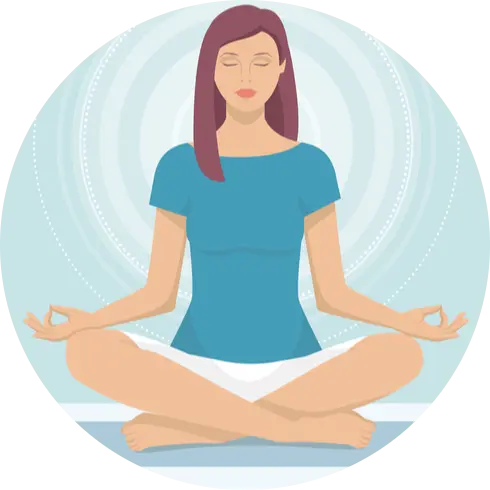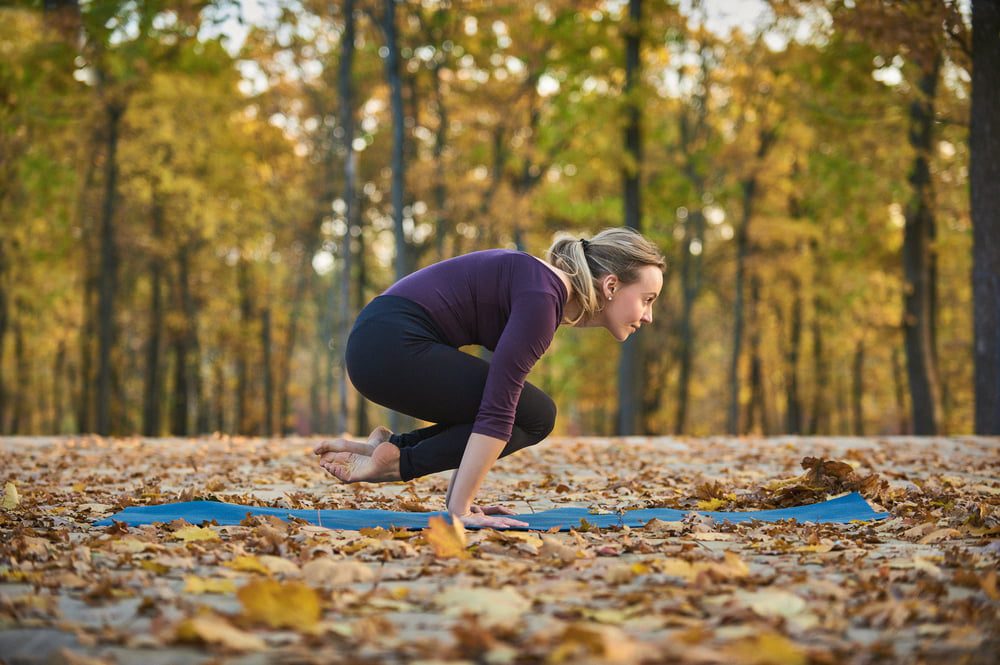The pendant yoga pose, also known as Lolasana in Sanskrit, is a challenging yet highly beneficial yoga pose that targets the core, arms, and shoulders. This pose requires strength and balance, making it a great addition to any yoga practice. In this article, we will explore the various benefits of Lolasana and provide step-by-step instructions on how to perform this pose correctly to maximize its advantages. Whether you are a beginner or an experienced yogi, incorporating Lolasana into your routine can help enhance your overall strength, stability, and body awareness.
benefits of Pendant yoga pose or Lolasana.
1. Core Strength.
Lolasana is a remarkable pose for building core strength. It engages the abdominal muscles, including the rectus abdominis, transverse abdominis, and obliques. Regular practice of Lolasana helps to tone and sculpt the abdominal region, providing a strong foundation for other yoga poses and daily activities.
2. Arm and Shoulder Strength.
Pendant Yoga Pose significantly strengthens the arms and shoulders. By supporting the entire body weight on the hands, it targets the muscles of the arms, such as the biceps, triceps, and deltoids. This increased strength not only enhances physical performance but also improves overall upper body stability and posture.
3. Improved Balance.
Lolasana requires a high level of balance and stability. As you lift your legs off the ground and balance on your hands, it challenges your ability to stay centered and focused. With regular practice, Lolasana helps to improve proprioception and body awareness, making it easier to maintain balance in other yoga poses and in daily life.
4. Increased Flexibility.
This pose stretches and strengthens the hip flexors, hamstrings, and lower back. As you lift your legs off the ground, it helps to lengthen these muscles, gradually improving flexibility in the lower body. Enhanced flexibility not only promotes better mobility but also reduces the risk of injuries during physical activities.
5. Energy and Vitality Boost.
Lolasana is an invigorating pose that stimulates the Manipura chakra, also known as the solar plexus chakra. This energetic center is associated with personal power, confidence, and vitality. Practicing Lolasana helps to activate and balance the Manipura chakra, resulting in increased energy levels, improved self-esteem, and a heightened sense of motivation.

6. Mental Focus and Concentration.
As Lolasana demands full concentration and mental presence, it enhances focus and mindfulness. The intense engagement required to lift the legs off the ground while balancing on the hands helps to quiet the mind and bring about a state of deep concentration. Regular practice of Lolasana can improve mental clarity, alertness, and overall cognitive function.
7. Emotional Release.
Pendant Yoga Pose can also facilitate emotional release. The physical intensity of this pose can help release stagnant energy and tension stored in the body, leading to a sense of emotional catharsis. This release can bring about feelings of lightness, relaxation, and emotional well-being.
| 💡 Tips FitnessQuora.com Incorporating Lolasana into your yoga practice can offer a multitude of benefits, both physically and mentally. However, it is essential to practice with proper alignment and listen to your body’s limits to avoid any strain or injury. Always consult with a qualified yoga instructor before attempting advanced poses like Lolasana, especially if you are a beginner or have any pre-existing medical conditions. |
How to do Pendant yoga pose or Lolasana?
Here are step-by-step instructions on how to do Pendant yoga pose or Lolasana:
1. Begin by sitting on your mat with your legs extended in front of you. Place your hands on the mat, fingers pointing towards your body, with your palms flat on the ground, slightly behind your hips.
2. Press your hands firmly into the mat and engage your core muscles to lift your legs off the ground, bringing your knees towards your chest. This will help you build the necessary strength and stability for the pose.
3. Shift your weight forward, transferring your body’s weight onto your hands and arms. As you do this, bend your elbows slightly to create a strong foundation.
4. Slowly lift your feet off the ground, straightening your legs out in front of you. Keep your core engaged and your gaze forward, focusing on maintaining balance and stability.
5. Once you have lifted your feet off the ground, try to bring your knees towards your chest, tucking them as close as possible to your upper body. This will help you create a compact and balanced shape in the pose.
6. As you hold the pose, continue to press firmly through your hands and engage your core muscles to maintain stability. Keep your shoulders relaxed and away from your ears.
7. Hold the pose for a few breaths, aiming to gradually increase your endurance over time. If you find it challenging to hold the pose for an extended period, start with shorter holds and gradually work your way up.
8. To release from Pendant yoga pose, slowly lower your feet back to the ground, one at a time. Straighten your legs and sit back on your mat, taking a moment to rest and relax.
| 💡 Tips FitnessQuora.com Remember, practice makes perfect! Pendant yoga pose may take time and patience to master, so be kind to yourself throughout the learning process. Always listen to your body and never force yourself into a pose that feels uncomfortable or painful. With consistency and perseverance, you will gradually build the strength and balance needed to achieve this challenging yet rewarding arm balance pose. |
Who can do Pendant yoga pose or Lolasana?
The pendant yoga pose is an advanced arm balance pose that requires a great deal of strength, stability, and control. It is not recommended for beginners or those with weak upper body strength. This pose is best suited for experienced yoga practitioners who have built up their arm and core strength through regular practice. Individuals who are comfortable with arm balances such as Crow pose or Crane pose may be ready to attempt Lolasana. However, it is essential to approach this pose with caution and under the guidance of a qualified yoga instructor to prevent injury.
Who should avoid Pendant yoga pose or Lolasana?
Pendant yoga pose requires significant upper body strength and core stability. Therefore, individuals who are beginners or have weak arms, shoulders, or wrists should avoid attempting this pose. Additionally, those with any existing injuries or conditions in the upper body, such as shoulder impingements or carpal tunnel syndrome, should steer clear of Lolasana as it may exacerbate their condition. It is important to prioritize safety and listen to your body’s limitations when practicing yoga, so if you fall into any of these categories, it is best to avoid Pendant yoga pose and opt for more suitable variations or modifications.
Bottom Line.
The pendant yoga pose, also known as Lolasana, is a challenging yet rewarding posture that offers numerous physical and mental benefits. This pose requires a strong core and upper body strength, as well as balance and focus. By practicing Lolasana regularly, individuals can improve their overall strength, increase flexibility, and enhance body awareness. Additionally, this pose helps to relieve stress and anxiety, promoting a sense of calm and tranquility. While it may take time and practice to master Lolasana, the journey towards achieving this pose is an empowering and fulfilling experience. Whether you are a beginner or an advanced yogi, incorporating the pendant yoga pose into your practice can greatly enhance your overall well-being and contribute to a balanced and healthy lifestyle.

 Workout
Workout
 Meditation
Meditation





 Contact Us
Contact Us





